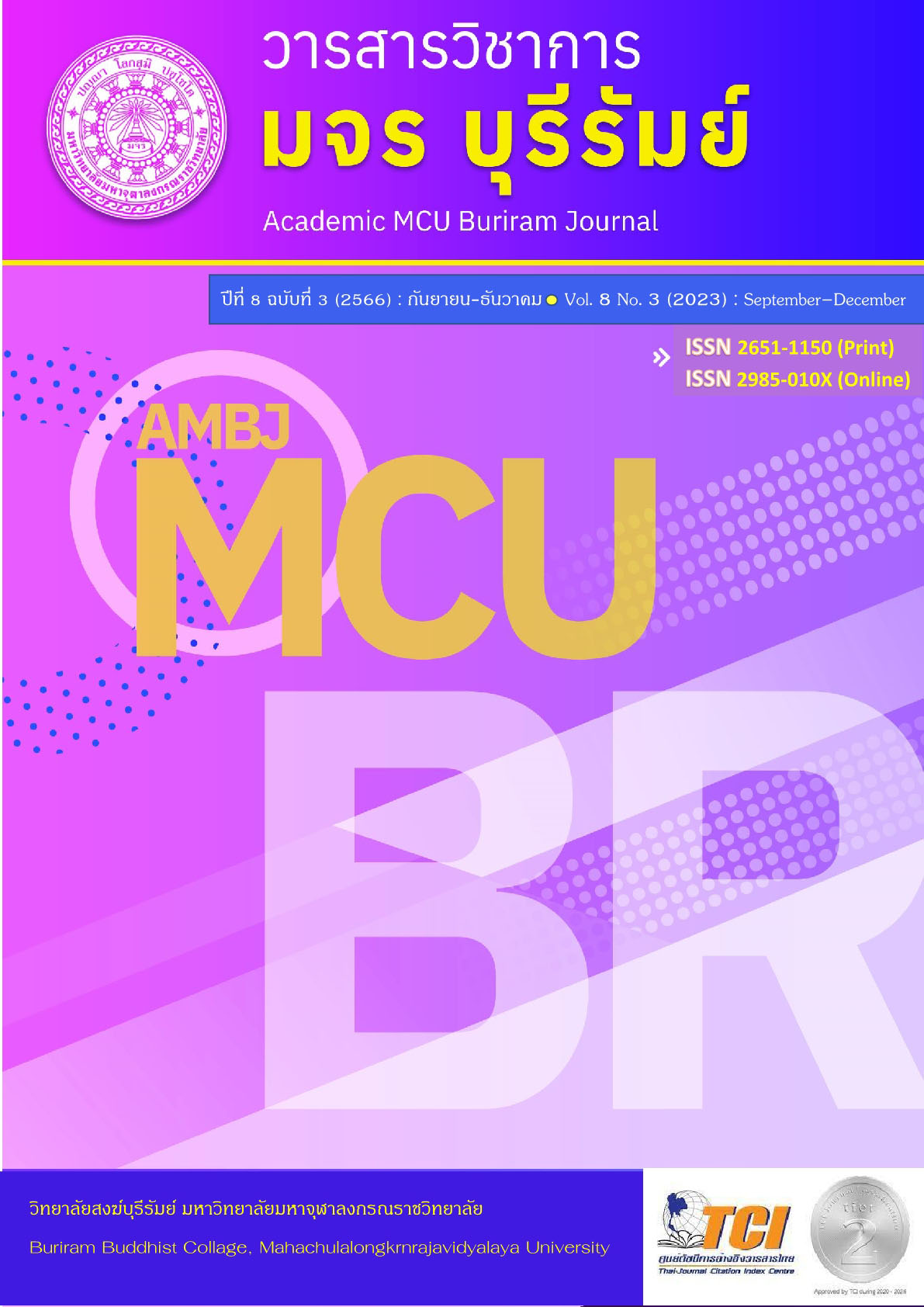A Concept of the Pair of Conflicting Couple and the Process of Solving the Conflict Problem in the Story of Monks of Kosambi in the Pairs Chapter of Dhammapada Commentary
Keywords:
Concept of the Pair of Conflicting Couple, Process of Solving the Conflict Problem, Story of Monks of Kosambi, Pairs Chapter of Dhammapada CommentaryAbstract
The purpose of this research article is to study the concept of the pair of conflicting couple and the Process of solving the conflict problem in the story of monks of Kosambi in the pairs chapter of Dhammapada Commentary. The form of research is that of qualitative research, by using methods of gathering the data from the story of monks of Kosambi (Kosambikavatthu) in the Pairs Chapter of Dhammapada Commentary and the related documentaries and research works, and then analyzing, and interpreting, the gathered data to present the findings in the form of analytical description.
The research results found that:
The pair of conflicting couple is a conflict of two sides of persons between a Dhamakathika monk and a Vinayathara monk in Ghositaram temple, Kosambi City, Vansa State, because of remaining the purification water in the ladle. This leads to making a quarrel by fining the other party’s offense on the grounds of not knowing and then committing it, accusing and insulting the other person for telling lie, and referring to the Vinaya retort in punishing the other party on the grounds of committing an offense and not showing it back. Hence, this quarrel in these matters caused each other to be dissatisfied with each other until it became a big conflict between them.
This concept of the pair of conflicting couple is the idea that must lead to making the two sides of the conflict come to reconcile with each other in order to balance the differences while living together in the same Ghositaram temple. The Buddha and the people of Kosambi came up with a methodical to resolve this conflict. That is that, the Buddha used to solve problems in 3 steps : simple problem solving, proactive problem solving, and solving the problem by stopping and retreating to affect the people of Kosambi. The last will lead to the use of social sanction. And the people of Kosambi came up with a two-step solution to the problem : social sanction to the conflicting monks and the use of reconciliation to ask the Buddha for forgiveness, by which the two sides of monks would be humiliated, realized and preached for further reconciliation and unity.
References
โกวิท คัมภีรภาพ. (2549). ทฤษฎีพื้นฐานการแพทย์แผนจีน. กรุงเทพฯ: การศาสนา.
ชาญณรงค์ บุญหนุน. (2554). พุทธศาสนากับอารมณ์. ใน อารมณ์กับจริยศาสตร์. กรุงเทพฯ: วิภาษา.
ณกมล ปุญชเขตต์ทิกุล. (2558). พุทธศาสนากับความปรองดอง. พิมพ์ครั้งที่ 2. กรุงเทพฯ: มหาวิทยาลัยราชภัฏพระนคร.
พระพุทธโฆสาจารย์. (2541). ธมฺมปทฏฺฐกถา (ปฐโม ภาโค). พิมพ์ครั้งที่ 21. กรุงเทพฯ: มหามกุฏราชวิทยาลัย.
พระมหาหรรษา ธมฺมหาโส (นิธิบุญยากร). (2554). พุทธสันติวิธี : การบูรณาการหลักการและเครื่องมือจัดการความขัดแย้ง. กรุงเทพฯ: บริษัท 21 เซ็นจูรี่ จำกัด.
มหาจุฬาลงกรณราชวิทยาลัย. (2539). พระไตรปิฎกภาษาไทย ฉบับมหาจุฬาลกงกรณราชวิทยาลัย, เล่มที่ 7, 10, 23, 26. กรุงเทพฯ: มหาจุฬาลงกรณราชวิทยาลัย.
ราชบัณฑิตยสถาน. (2556). พจนานุกรมฉบับราชบัณฑิตยสถาน พ.ศ. 2554. พิมพ์ครั้งที่ 2. กรุงเทพฯ: นานมีบุ๊คส์.
วศิน อินทสระ. (2555). ธรรมบท ทางแห่งความดี 1. พิมพ์ครั้งที่ 8. กรุงเทพฯ: ธรรมดา.
สมิทธิพล เนตรนิมิตร. (2559). อรรถกถาธรรมบทในสังคมไทย. วารสารมหาจุฬาวิชาการ, 3(1), 36-51.
สุวรรณา สถาอานันท์. (2554). บทนำ : จากอารมณ์สู่จริยศาสตร์ จากจริยศาสตร์สู่อารมณ์. ใน อารมณ์กับจริยศาสตร์. กรุงเทพฯ: วิภาษา.
อภิญวัฒน์ โพธิ์สาน. (2564). ชีวิตและผลงานนักปราชญ์พุทธ. พิมพ์ครั้งที่ 3 ปรับปรุงใหม่. กรุงเทพฯ: พิมพ์ทันใจ.
Downloads
Published
How to Cite
Issue
Section
License
Copyright (c) 2023 Academic MCU Buriram Journal

This work is licensed under a Creative Commons Attribution-NonCommercial-NoDerivatives 4.0 International License.
ทัศนะและความคิดเห็นที่ปรากฏในบทความวารสารฉบับนี้ถือเป็นความรับผิดชอบของผู้เขียนบทความนั้น ไม่ถือเป็นทัศนะและความรับผิดชอบของบรรณาธิการ





